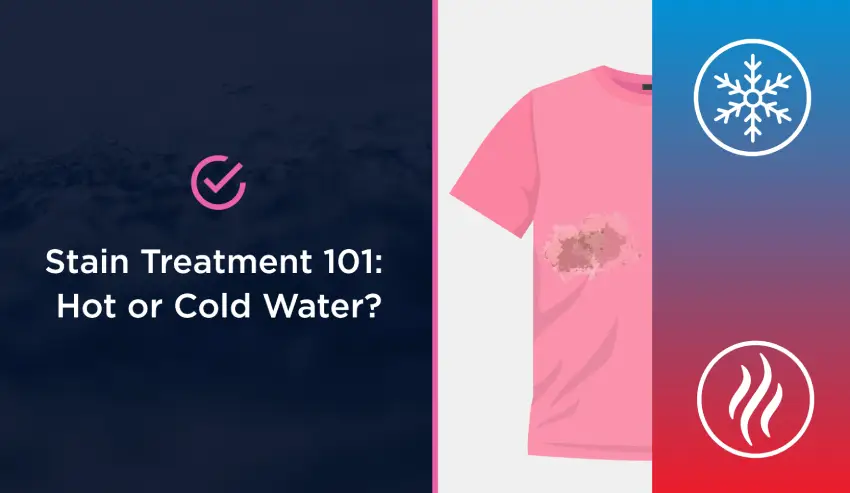
You just spilled a glob of mustard on your new, white blouse. You knew that hot dog was a risky choice, but it was simply irresistible. Fret not! Your new shirt is not ruined — at least not yet.
As soon as that stain hits the fabric, the countdown is on. If the stain dries, you might as well make it your dedicated hot dog-eating smock. The most important step is to take off that shirt and get it in water as soon as possible. But not just any water. Choosing between hot and cold is the difference between stain removal and permanent stain setting.
Should I Use Hot or Cold Water for White Clothes?
Choosing between hot and cold water can be misleading. Many people assume that the color of the garment dictates water temperature. You wash whites in warm-to-hot water to blast out all of the stains, and you wash colors in cold water to keep the colors from running, right? Well, this logic does not translate to spot treatment. When it comes to stain removal, it’s all about the characteristics of the stain. A stained white shirt may require hot or cold water, depending on what was spilled on it.
Should I Use Hot or Cold Water for Blood Stains?
One of the most common stain questions is how to remove blood stains. Typically, cold water works great on blood, as well as food, beverages and water-based paint, while hot water works best on protein-based stains.
Unfortunately, there’s no golden rule to stain removal. For example, most food stains should be soaked in cold water, unless it’s egg, mustard or a tomato-based product. Another tricky rule: Urine stains get cold water while sweat and vomit stains get warm-to-hot water.
Take a minute to study our cheat sheet below. Or better yet, print it out and post it in your laundry room!
Stains to Soak in Cold Water
- Baby food/formula
- Blood
- Cheese
- Chocolate
- Coffee and tea
- Jelly and jam
- Milk and dairy products
- Paint (water-based)
- Soft drinks
- Soy sauce
- Urine
- Wine, beer and cocktails
Stains to Soak in Warm-Hot Water
- Dirt/mud
- Dye and marker
- Egg
- Grass
- Grease
- Oil
- Tomato-based products
- Lotion
- Mustard
- Sweat
- Shoe polish
- Vomit
Yes, the temperature of the water will help treat stains to the best of your ability. But when it comes to treating stains, the most important step is to get the garment in water before it has time to dry and settle. If you’re unsure what temperature the water should be, start with room temperature. Then pull out your phone and look up this cheat sheet. You can always move the garment to either cold or hot water once you figure out which temperature is right for your stain.
As your home cleaning professional, Molly Maid is dedicated to cleaning your home or apartment and giving you the knowledge to keep it that way! And if your household has trouble with mustard and other messy spills, you could probably use an extra hand to tidy things up. Contact your local Molly Maid, a Neighborly company, or call to learn more about our flexible cleaning programs!
